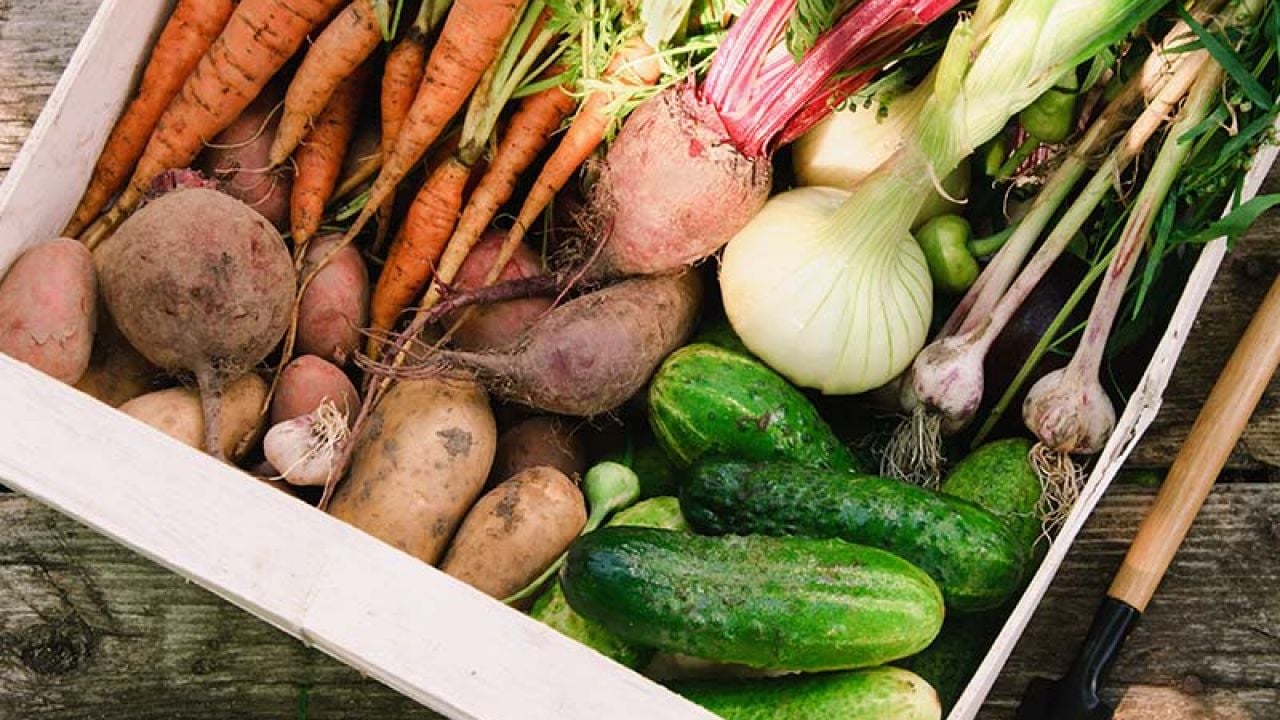
Wellness Chat is a new EWG series bringing you the latest news on cancer prevention through discussions with experts in the field. Today's guest: Jocelyn Weiss, Ph.D
EWG: Are there specific foods or food properties that you would suggest anyone concerned about cancer seek out or avoid when they’re at the grocery store?
JW: My number one recommendation is to focus on the perimeter of the grocery store, as this is where the produce and less processed foods are located.
I’m almost always asked whether people should buy all their foods organic. In an ideal world, I would say yes. Unfortunately, the U.S. agricultural system doesn’t let everyone afford buying all their foods organic. Instead focus on the crops with the highest concentrations of pesticides.
Organophosphates, for example, are a class of pesticides widely used in agriculture to kill pests, but their residue can also be toxic to humans. I refer clients and friends to EWG’s Dirty Dozen list and suggest that they at least try to buy those items organic.
Many canned food containers are lined with bisphenol A, particularly acidic foods such as tomatoes. Choose frozen vegetables over canned, which are usually higher in nutrients since they are frozen soon after harvesting. Either cook tomato sauce from scratch or buy it in jars. It’s possible to find brands that are explicitly labeled as BPA-free, but research shows that alternative chemicals used to replace BPA may not be less toxic.
When buying fish, balance the impact of wild-caught versus farmed for sustainability and health. Farmed fish are generally dosed with hormones and antibiotics, along with swimming in and ingesting water of low quality. The sustainability of industrial-scale wild fishing, however, raises overfishing concerns. Also take care not to over-consume larger fish varieties, such as tuna and swordfish, with accumulated high levels of mercury. Seafood Watch from the Monterey Bay Aquarium is a website and a mobile app that provides recommendations for the best sources of sustainable seafood.
Lastly, read nutrition labels when purchasing packaged products. Avoid products with added sugars, preservatives, food additives and color dyes. While the FDA maintains that artificial food dyes are safe, some research has shown dyes and the preservative sodium benzoate contribute to hyperactive behavior in children. Many yogurt brands also contain as much sugar as a can of soda.
Carrageenan, a food texturizer derived from red algae and included in many dairy and milk-alternative products, has been shown to be inflammatory in lab studies. Monosodium glutamate, MSG, present in packaged foods under many names, can trigger headaches and other allergic symptoms.
If you do not recognize or cannot pronounce ingredients on a label, there’s a good chance you should not eat that product.
EWG: I hear a lot of advice for people to eat whole foods. Are there things you think people may mistakenly believe are whole foods? And are there any whole foods you would not include as part of a healthy diet?
JW: Even more than “whole foods,” I hear people should eat “clean.” There are so many ways to interpret this advice. People should eat as close to nature as possible. When buying packaged goods, you should recognize the ingredients on the label as foods you could and would eat individually.
People should aim to crowd out the foods that aren’t so good for them with the ones that are. As the writer Michael Pollan says, “Eat food. Not too much. Mostly plants.” This really sums up my philosophy on eating. Eat real, unprocessed or minimally processed foods. Eat in moderation. Eat meals rich in vegetables, fruits, legumes, nuts and seeds. Consider animal products as a condiment rather than the main [dish].
Strict rules and limitation alone do not create wellness and a healthy life. There is always room for fun – and chocolate, especially dark chocolate, which is full of healthy antioxidants.
EWG: Scientific research is so important for uncovering how disease works. In some cases we may know that something, such as obesity, is associated with cancer, but don’t fully understand why. What studies are still needed to help us understand how food, diet and exercise are associated with the development of cancer or other chronic diseases?
JW: As an epidemiologist, I believe in the power of well-designed studies to uncover important associations. Science has a tendency to be reductionist, leading to the idolatry or demonization of single ingredients, mechanisms or risk factors. Findings get pulled from peer-reviewed studies, plastered in the public media and then written about in diet books.
No single nutrient, food item or body characteristic exists in a vacuum. In addition, even the strongest findings come with some degree of uncertainty as to whether they apply to the entire population. If we hope to make sense of the complex milieu in which disease happens, and influence behavior, we need to understand the mechanisms by which different factors impact health.
The microbiome is an emerging area that is showing promise . Microbial cells (bacteria and viruses) outnumber other cells in our body 10 to 1. They play important roles in metabolism, immunity, digestion and other pathways. The key is to look at mechanisms in the context of a holistic, larger picture.
EWG: What’s going to be on your holiday plate? Any recipes from your blog you would suggest for the holidays?
JW: Over the past couple of years, most of my family has gotten on board with healthier eating, but the holidays are always tricky. My mom has rumbled about a brisket with all the trimmings, so I’ll likely poach a piece of wild-caught Alaskan salmon along with all the veggie sides.
• • •
For healthy recipes and more information from Jocelyn Weiss, visit anuprocessedlife.com. To help you make healthy choices at the grocery store, check out EWG’s Food Scores and Dirty Dozen.
*Since conducting this interview Dr. Weiss has taken the position of Education/Training Coordinator at Duke Integrative Medicine in Durham, NC.